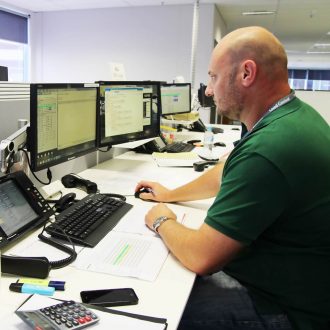
A load sheet guide for a Boeing 747-400ER.
Sometimes when you are settling down for take-off and before the cabin door is closed, you might hear one of the pilots come across the PA and say that the crew are just waiting for the final piece of paperwork.
Ever wondered what it is? It’s the aircraft’s load sheet which details how much cargo is loaded and how many passengers are onboard.
And even the average weight of everyone’s hand luggage is taken into consideration (that’s one of the reasons why we set limits on what you can take on with you as well as avoiding a Tetris-type scenario with the overhead lockers).
This is all worked out to ensure the aircraft is balanced and has the optimal centre of gravity.
Why is this so important?
When the optimal centre of gravity is achieved, the aircraft flies smoothly, safely and more efficiently reducing drag which reduces fuel burn. It’s also why we ask people to make sure they’re in their allocated seats for take-off and landing. Our Load Control team at our Sydney HQ run the weight and balance numbers on up to 500 flights a day.
The weather also plays its part because if there’s a storm our pilots need to avoid, they will load more fuel so they can divert or hold above the airport if needed.

Here’s Tom, one of the team in Load Control preparing that last piece of paperwork for a flight from Sydney to Brisbane
This could mean reducing the amount of cargo loaded which then of course changes the weight of the aircraft.
The weight is so finely tuned that things like a new paint job and even the number of pillows and blankets can impact the optimal efficiency of the aircraft.
That’s why every couple of years every aircraft in our fleet (from our small Dash 200s which carries 36 customers to our Airbus A380 with a whopping 484 passengers), gets lifted on the scales for a Biggest Loser style weigh in, just to make sure.
The paperwork bit is becoming a thing of the past, though as our pilots are able to access all the necessary paperwork electronically using their electronic flight bags AKA, iPads.